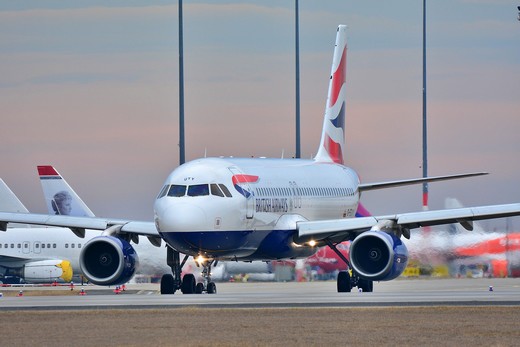
DoorDash (DASH) is the number-one online food order aggregator in the United States, ahead of Uber Eats (UBER) and Grubhub (JET)/(TKWY). The company is in the early stages in trying to attract to its platform a larger piece of what we estimate could be US$1 trillion worth of goods and services by 2025. DoorDash benefits from the network effects between merchants, deliverers (or "dashers"), and consumers, plus intangible assets in the form of data, which we believe together warrant a narrow economic moat rating.
Consumers use DoorDash’s app to order food for pickup or delivery from restaurants. DoorDash currently has a 56% share of the U.S. market, above Uber’s 26% and Grubhub’s 18%, according to data from Second Measure. The company has over 450,000 merchants, more than 20 million consumers, and 1 million-plus dashers on its platform. We view the primary market that DoorDash is targeting aggressively--consumers spending on food and beverages away from home--as attractive and expect it to grow 4%-5% annually in the next five years. DoorDash has also begun to provide similar services to businesses in industries other than restaurants, such as grocery, retail, pet supplies, and flowers.
With strengthening of its network effect, we expect DoorDash to maintain its leadership position in a market where there will probably be only one other viable player, Uber Eats, in the long run. This network effect should also lower costs to acquire consumers and deliverers, resulting in further operating leverage and GAAP profitability in 2023.
Network of Consumers, Merchants, and Dashers Makes a Moat
In our view, DoorDash benefits from network effects and intangible assets in the form of data. We think these competitive advantages are sustainable and will help the company become profitable (likely in 2023) and generate excess returns on invested capital for at least 10 years; this leads to our narrow moat rating.
Consumers can use DoorDash’s app to order food on demand from merchants mainly in the U.S. The company is also investing to expand its aggregator capabilities and logistics to other industries such as grocery, retail, pet stores, and flowers. The total amount that the consumer pays is referred to as the gross order volume. From that, DoorDash makes pass-through payments to the merchants and to the dashers. DoorDash also deducts refunds or credits and costs associated with promotions from the gross order volume. The amount remaining, which is mainly the commission charged to merchants and service fees paid by consumers, is recognized by DoorDash as revenue. The take rate is the percentage of gross order volume that revenue represents. In 2020, the company generated US$24.7 billion in gross order volume (up 207% year over year) and US$2.9 billion in revenue (up 226%). Its take rate improved by nearly 1 percentage point from the prior year to 11.7% in 2020.
With a 56% U.S. market share, DoorDash has created a marketplace network effect with three parties: consumers, merchants (currently mainly restaurants), and deliverers. Consumers represent the demand side of this heterogenous network while merchants and dashers represent the supply side. As more consumers use DoorDash, more restaurants are likely to make their offerings available on the app, which will widen the array of foods available, which in turn benefits current consumers on the app while attracting new ones. With more orders, the app will attract more dashers, which will improve the timeliness of order deliveries, pleasing both merchants and consumers, which in turn will also continue to attract more merchants and consumers to the marketplace. The network effects created by DoorDash are local, where nearly all orders in specific markets, cities, or areas are captured by one or two delivery demand aggregators.
We view the total gross order volume available--which is consumer spending on food and beverages away from home and targeted by DoorDash--as attractive. According to data from the Economic Research Service of the U.S. Department of Agriculture, total consumer spending on food and beverages in the U.S. in 2020 was US$1.5 trillion, of which approximately 51%, or US$764 billion, was on food away from home, which includes eating in restaurants (on-premises) and ordering for pickup and deliveries (off-premises). We expect the away-from-home market to grow 4%-5% annually through 2025 to over US$1 trillion.
Based on data from the USDA and Euromonitor, we estimate that off-premises food spending grew at an average annual rate of over 6% during 2009-19. Within off-premises food spending, home delivery food spending grew more than 14% annually during the same period and accelerated significantly in 2020 because of the COVID-19 pandemic. While we expect growth to decelerate after the pandemic, we still believe the market and its growth potential are attractive. In our view, the pandemic may have resulted in a slight but permanent change in consumer behavior in which demand for convenience and speed has increased. DoorDash has grabbed less than 2% of the market, which represents a significant growth opportunity for the company.
We think DoorDash has established a network effect economic moat for several reasons.
- Demand by consumers remains strong, which continues to attract more restaurants to DoorDash. The company has increased its share of this growing market in terms of percentage of total gross order volume. Data from Second Measure has shown that most of DoorDash’s gain has come at the cost of Grubhub. Uber has also lost a few percentage points of market share to DoorDash; however, its share has remained in a tight range, which also displays Uber’s success in defending its territory in the U.S.
- While partnerships with restaurants are not exclusive, we think it is more likely that over time, restaurants will stick with one or two third-party delivery service providers, which increases our confidence in the sustainability of DoorDash’s network effect. As revenue from deliveries begin to represent a bigger chunk of merchant businesses, we think they will prefer to integrate platforms like DoorDash with their sales systems in order to streamline order processing and avoid any deterioration in the quality of their services, such as not making timely deliveries or delivering the wrong food. System integration could also improve convenience for the merchant’s consumers.
- With DoorDash’s market leadership, we think more dashers will be attracted to the platform, which will help the company and its restaurant partners provide more timely deliveries, increasing the chances of consumers ordering again. We expect dashers to work with a platform that is a market leader and operating in high-route-density areas. DoorDash’s local network effect, which has resulted in capturing most of the high-density metropolitan areas in the U.S., makes the platform more attractive to potential dashers.
- With more restaurants and dashers on the platform, which together will provide better service, we expect DoorDash (along with Uber) to minimize promotions on its app. With fewer promotions for consumers combined with lower incentive pay to dashers, DoorDash is likely to increase its take rate over the next few years, which will further drive revenue growth. We think better service could slightly lower refunds and credits, which could push DoorDash’s take rate higher.
- The local network effect has also helped DoorDash reduce its consumer and restaurant acquisition costs in most of the markets that it serves, which we think will create more operating leverage for the company.
- Consolidation has taken place in this market in the U.S. The number of main participants in this market has declined to just three, and we think in the long run the U.S. online food delivery market will consist mainly of DoorDash and Uber, which is indicative of a network effect market. While there are no switching costs for consumers, merchants, or dashers, we believe the local network effect and consolidation has eliminated many potential substitutes in those markets. For this reason, we do not expect lack of switching costs to reverse the flywheel effect that DoorDash is experiencing anytime soon.
As DoorDash benefits from its network effect, we think it also gains access to valuable intangible assets in the form of consumer and dasher data, which we suspect helps it improve its services and increase its dashers’ efficiency. Consumer data will provide the company with more color regarding consumer ordering behavior, what time of day consumers normally order, what types of foods they prefer, and what restaurant or food type recommendations may help consumers more quickly and frequently decide. This could increase the value of DoorDash’s partnership with restaurants, as those merchants can also utilize the data to operate more efficiently.
Competition Is a Risk
We assign DoorDash a very high uncertainty rating, given the competition to retain consumers, merchants, and deliverers, mainly from Uber and Grubhub in the U.S. market.
DoorDash is susceptible to blame for possible missteps in data utilization and/or lack of data privacy and security, which we consider an environmental, social, and governance risk. In addition, as deliveries to consumers by DoorDash on behalf of merchants are made mainly by gig workers, the company is likely to face continuing pressure from lawmakers to provide higher pay and more benefits and to possibly categorize those contractors as employees, all of which we view as another ESG risk. While voters in California sided with companies such as DoorDash and with gig workers in 2020 by approving Proposition 22, it remains uncertain what actions other voters, other states, and federal lawmakers are likely to take.
Whether the immediate change in consumer dining behavior that we saw in 2020, mainly driven by the COVID-19 pandemic, will last is also a risk, in our view. A return to the prepandemic normal could decelerate or completely stop DoorDash’s growth.
DoorDash went public in late December 2020, raising $3.3 billion to fund its operations as it continues to invest in growth. The company likely will not become profitable until 2023. It holds US$4.5 billion in cash and cash equivalents and no debt. It has access to a US$400 million revolving credit facility from which nothing has been drawn.
DoorDash burned US$159 million and US$467 million in cash from operations in 2018 and 2019, respectively, and it generated $252 million in cash from operations in 2020 due to a smaller net loss and higher noncash expenses, especially a significant year-over-year increase in stock-based compensation to US$322 million from US$18 million. The company averaged US$66 million, or nearly 6% of revenue, in capital expenditures during 2018-20.
We expect the company to average free cash flow to equity/revenue of 9.5% through 2025. However, we do not foresee it issuing dividends





















